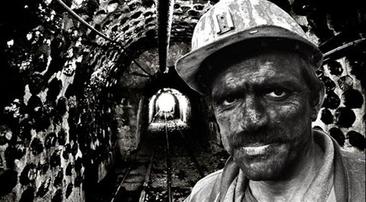First, as the Cancer Research Simplified (CRS) Family, we are deeply saddened by the loss of over 245 coalminers killed in the explosion and fire of the coalmine in the Western Turkish town of Soma yesterday, May 13th, 2014. Our article below is dedicated to our Turkish followers and to all coalmine workers in the world. This article represents our research into the potential link between coal mining and cancer.
Oncelikle, Cancer Research Simplified (CRS) ailesi olarak, Soma'daki maden ocaginda dunku patlama ve yangin sonucu hayatini kaybeden en az 245 olu ve bircok yarali icin derin uzuntumuzu dile getirmek istiyoruz. Asagidaki makalemizi, yuksek sayidaki Turk izleyicilerimize ve uyelerimize, ayrica tum dunyadaki komur madeni iscilerine armagan ediyoruz. Komur madenciligin kanser riski tasiyip tasimadigini arastirdik.

The presumption of a possibly elevated cancer risk in coalminers is based mainly on two hypotheses: 1) Exposure to pure quartz dust/crystalline silica dust, and 2) Ingested coalmine dust interacting with the acidic environment in the stomach, potentially causing an elevated gastric cancer (stomach cancer) risk. (2)
Most coalmine dusts include a high percentage of quartz. (2) Crystalline silica dust has been determined to be a Group I carcinogen by the International Agency for Research on Cancer. (3) The exposure to airborne quartz particles was associated with a small but statistically significant risk for lung cancer mortality. (4) Although research in the 1950s did not strongly support a relationship between coal mine dust exposure and lung cancer in particular, newer studies have more definitively linked coalmine dust exposure and cancer. A German study from 1997 demonstrated a small, but statistically significant risk for gastric (stomach) cancer among coalminers. (2) In 2008, a Czech study found significantly higher lung cancer risk in workers with pneumoconiosis who were working in a mine comparing with general Czech population. (5) In 2010, 4 new cases of cancer were found among former mine workers in Minnesota, USA, increasing the number of mine-related cancer cases to 63. (6)
Overall, the reports are at times contradictory, making a definitive conclusion about cancer risk due to coal mining a challenge. However, small, but statistically significant studies support Hill’s criteria for causation. The lack of strong data regarding people’s exposure and risk, and the wide use of coal mining to enable the production of energy make further studies of population and risk a requisite.
Glossary:
Pneumoconiosis: A.K.A. Coal Workers' Pneumoconiosis or Black Lung Disease, is a lung disease caused by inhaling coal dust, especially in mines, over a long period of time.
- Coal Worker's Lung Diseases, ILO, 2011
| coal_workers_lung_diseases-ilo-2011.pdf |
| overall_mortality_and_cancer_mortality_of_coal_miners-ann_occup_hyg_1997.pdf |
| coal_mine_dust_exposure_report_niosh_2011_.pdf |
Environ Med 67:270–276, 2010.
| lung_cancer_risk_in_black-coal_miners_with_pneumoconiosis_in...__epidemiology.pdf |
| 4_new_cases_of_cancer_found_among_former_mine_workers__minnesota_public_radio_news.pdf |










